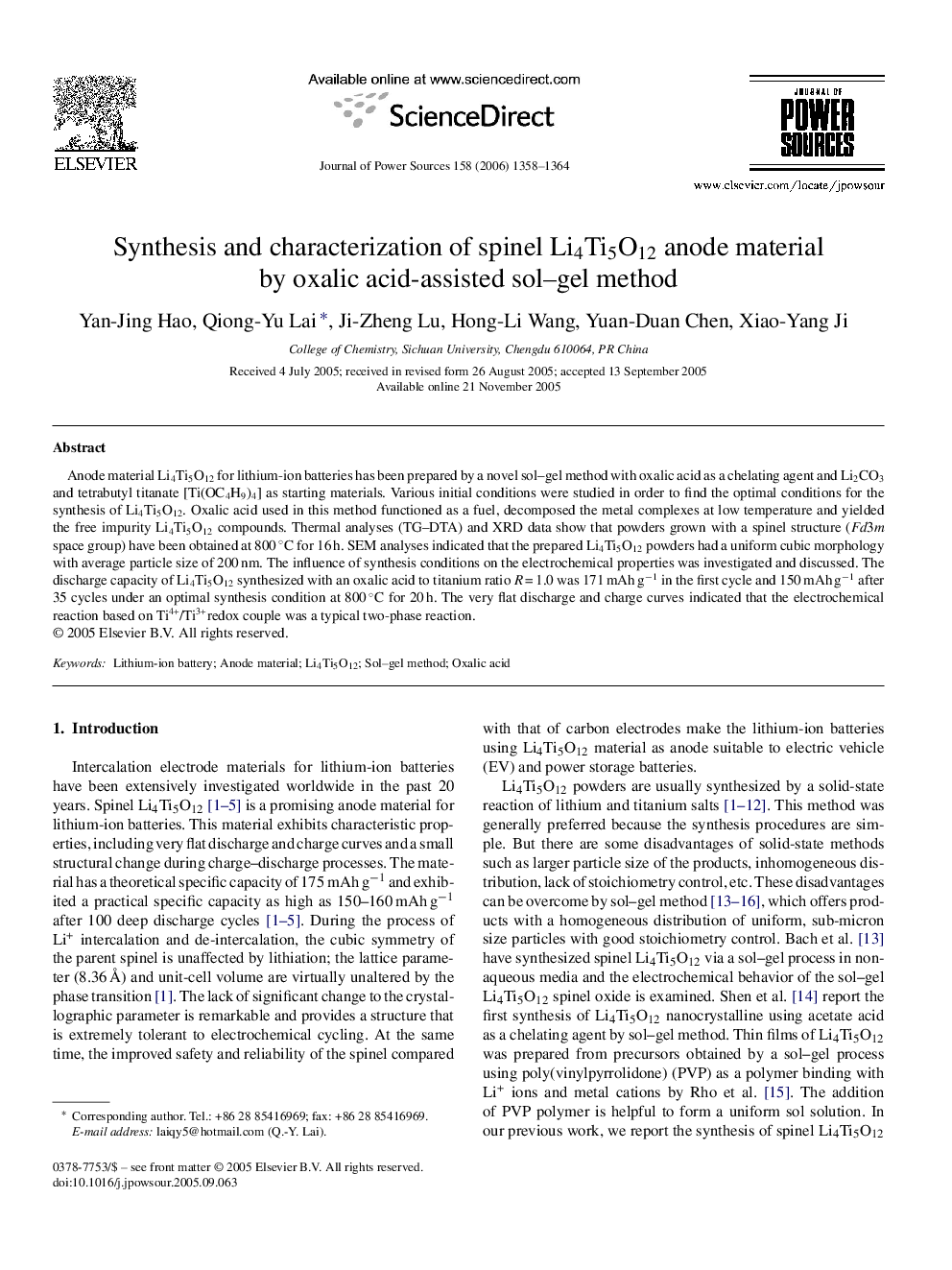| Article ID | Journal | Published Year | Pages | File Type |
|---|---|---|---|---|
| 1287410 | Journal of Power Sources | 2006 | 7 Pages |
Anode material Li4Ti5O12 for lithium-ion batteries has been prepared by a novel sol–gel method with oxalic acid as a chelating agent and Li2CO3 and tetrabutyl titanate [Ti(OC4H9)4] as starting materials. Various initial conditions were studied in order to find the optimal conditions for the synthesis of Li4Ti5O12. Oxalic acid used in this method functioned as a fuel, decomposed the metal complexes at low temperature and yielded the free impurity Li4Ti5O12 compounds. Thermal analyses (TG–DTA) and XRD data show that powders grown with a spinel structure (Fd3m space group) have been obtained at 800 °C for 16 h. SEM analyses indicated that the prepared Li4Ti5O12 powders had a uniform cubic morphology with average particle size of 200 nm. The influence of synthesis conditions on the electrochemical properties was investigated and discussed. The discharge capacity of Li4Ti5O12 synthesized with an oxalic acid to titanium ratio R = 1.0 was 171 mAh g−1 in the first cycle and 150 mAh g−1 after 35 cycles under an optimal synthesis condition at 800 °C for 20 h. The very flat discharge and charge curves indicated that the electrochemical reaction based on Ti4+/Ti3+redox couple was a typical two-phase reaction.
